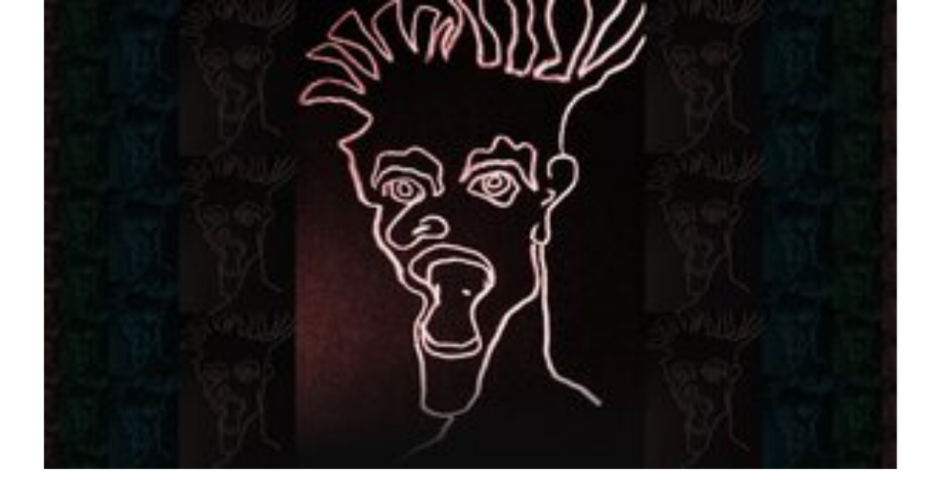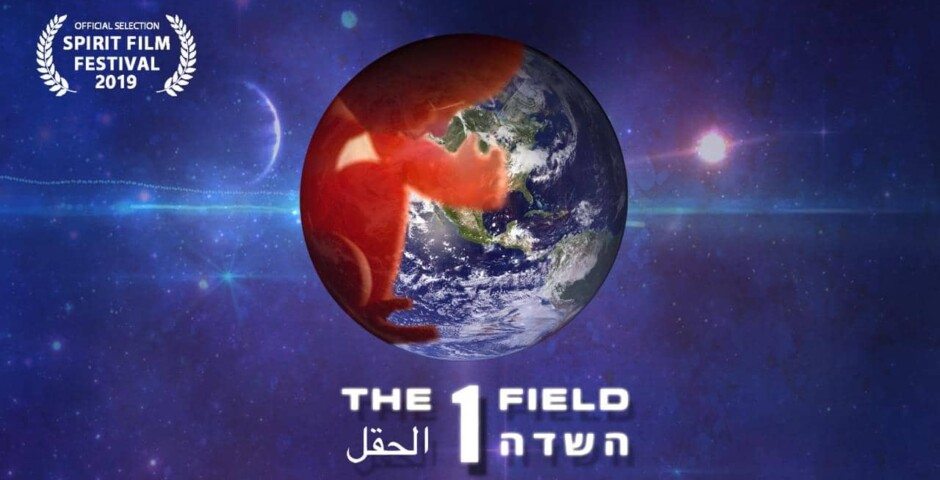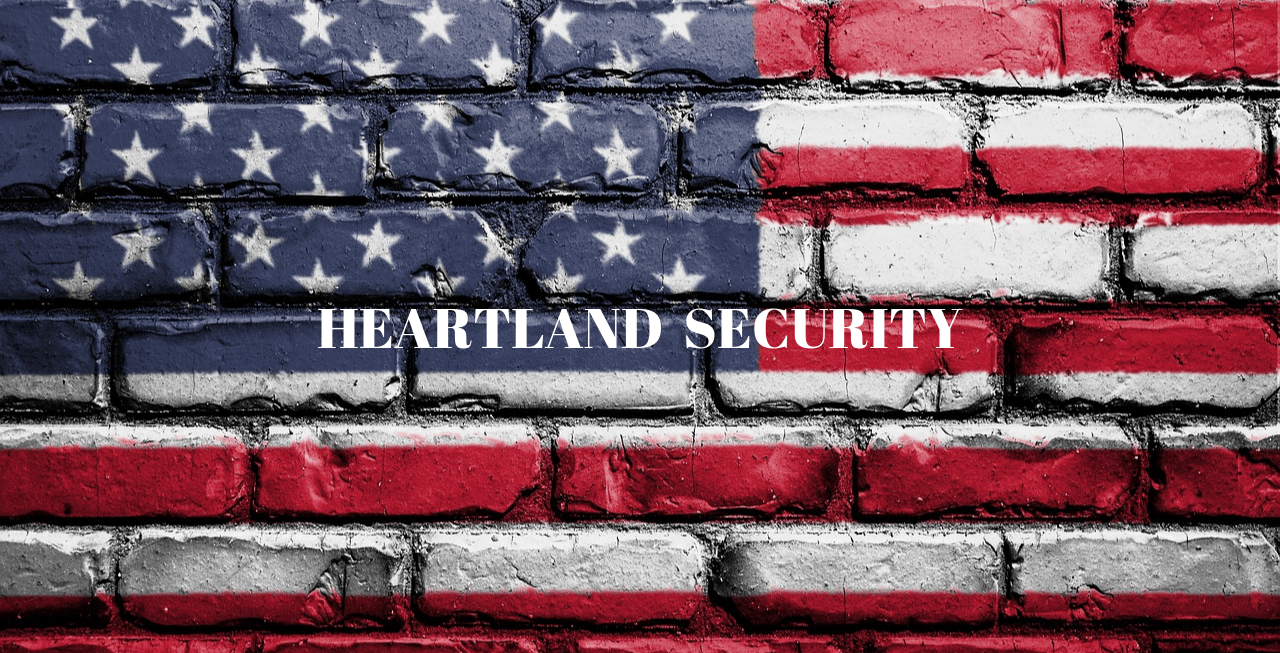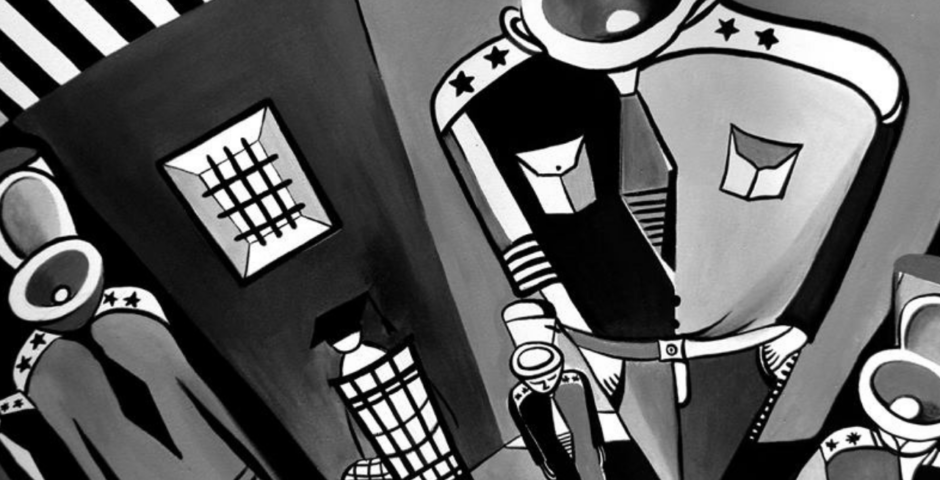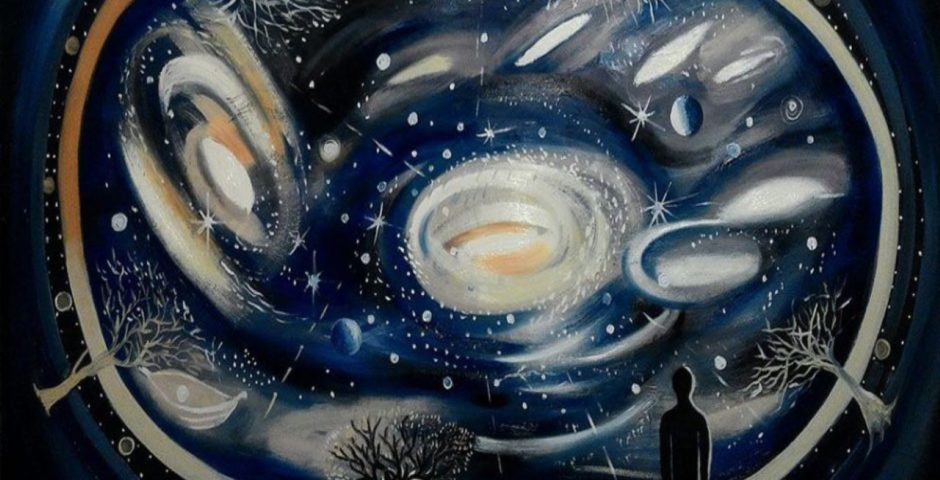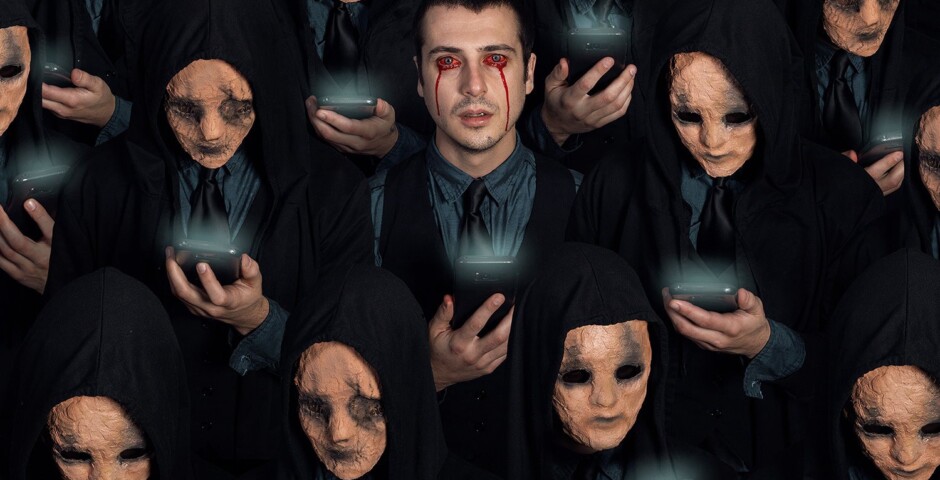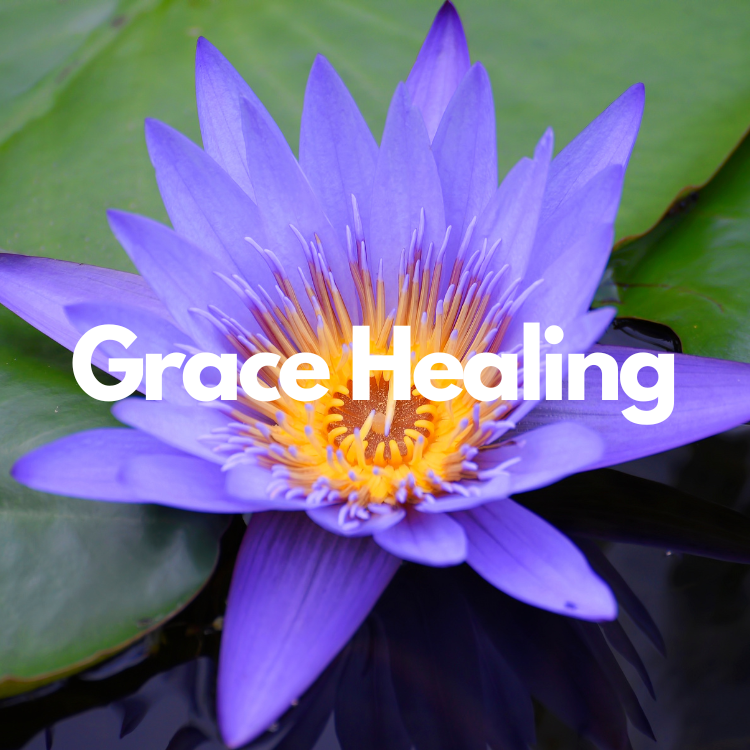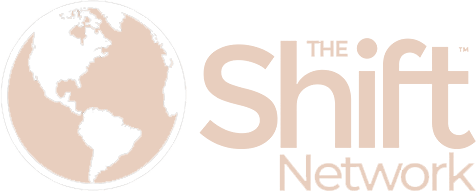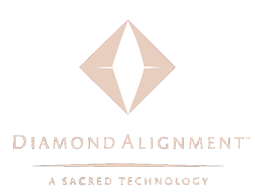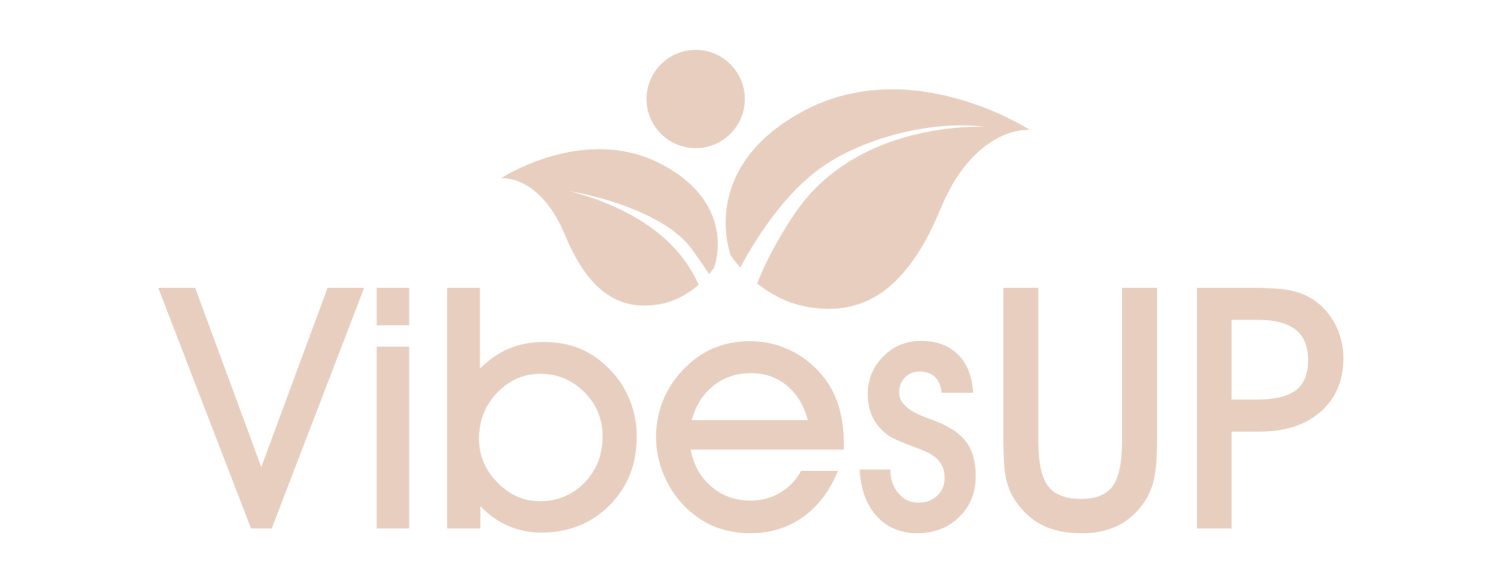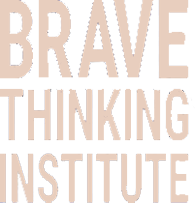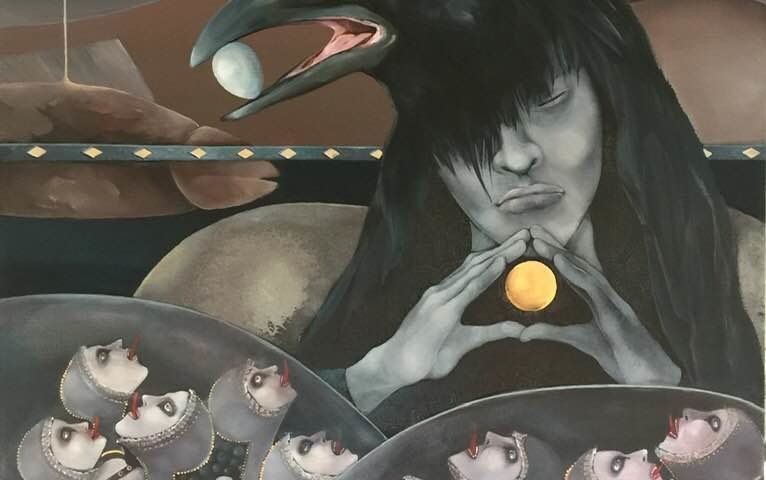
Paul Levy, Solving the Puzzle of Ourselves
We are a species gone mad. The essence of the madness that afflicts our species is that we don’t know who we are. Many of us have become identified with our mask, our persona, the role we are playing in the world. Intrinsic to this process is that we split off, dissociate from and compartmentalize the darker, less savory aspects of ourselves, rendering them unconscious. In doing so, we are unwittingly empowering these darker parts of ourselves to act themselves out through us outside our conscious awareness. Instead of being in touch with our wholeness (which includes both light and dark), we then become a partial, fragmented person who is continually fleeing from the darker half of ourselves. Describing this figure, Jung writes, “He will stoop to every kind of self-deception if only he can escape the sight of himself.”[1]
Picture from EMN Online Museum of Art by Jolanta Talaikiene, “To Die and to Rise” (above)
It is as if there is a deceiving spirit—the Apocryphal texts of the Bible call this a “counterfeiting spirit”—that impersonates us, creates a duplicate of ourselves, and if we fall for its ruse, we then unconsciously identify with its limited and artificial version of ourselves.[2] This perverse imitator then stands in for, takes the place of, and plays the role of being us. All the while we have no idea that we—who we really are—have been deposed (in a silent and invisible coup), replaced by a master copy of ourselves. In this state we typically feel out of sorts with ourselves, a bit disoriented, numb and anesthetized to ourselves, not knowing who we are. We feel not only alienated from the world but alienated from our very selves as well. Without knowing why, we are left feeling “not ourselves,” without being aware of the covert identity theft that has taken place within us.
In essence, instead of simply being who we are, we then see ourselves from the point of view of how we imagine others see us, which severely constricts our freedom and ability to simply be who we are. Instead of seeing the world (of which we are a part) through our own eyes, we have given away our own power to the outside world, to which we become enthralled. We then try to behave in ways that fit our constructed self-image of who we imagine we’re supposed to be according to how we imagine the eyes of the world see us. Blind to our own nature, we have then out-sourced our own vision. If we are overly concerned with how others view us (or more accurately, how we imagine others see us), we become afraid to creatively express our own unique individuality, fearful of responding to the call of our own individuation.
One of the greatest dangers about unconsciousness is that it increases our proneness to suggestion. Once we disconnect from the wisdom that arises from our own experience, we become overly suggestible to taking on other peoples’ perspectives about the world, thereby easily falling prey to the prevailing groupthink of the herd. This proclivity towards collective mass-mindedness opens up the door to us being controlled and manipulated—both by internal and external forces—that don’t usually have our best interest in mind.
Being that our fundamental problem is that we mistakenly identify with a fictitious identity— a false version of ourselves—it makes perfect sense that its antidote is for us to connect with who we really are. The bottom line is that we are being asked by the universe to simply be ourselves – we are being invited to step into the role prepared for us from the beginning of time. We can only make a real difference in the world if we are truly ourselves; if we are living someone else’s idea of who we should be, how could we possibly benefit anyone – we then can’t even be of benefit to ourselves! It is only in connecting with who we really are, with what is really ourselves, that a healing power from beyond ourselves gets constellated within us. Paradoxically, while connecting with ourselves is the only thing that ultimately has the power to heal, healing comes only from that which is beyond ourselves, and thus, leads us beyond ourselves.
Intimate familiarity with our true nature is the never-failing protection against the seemingly darker forces of our universe. The paradox is that we are all fragile and vulnerable, and yet, our true nature has an indestructible quality and enduring foundation. Though we can feel intense alienation from the world and from ourselves, deep down we can never be alienated from ourselves, for our authentic self is always with us – whether we know it or not. Appearances to the contrary, deep down we can never be other than who we truly are.
It is easy—and can be such a cliché—to counsel people to simply be who they are – but the question arises: who are we, really? Talking about who we are in words can as much obfuscate as reveal the subject. Many people “don’t know” who they are—which is closer to the truth than they realize—for who we are is not an object or a thing that is knowable or graspable in the usual sense of the word: we are a mystery. And yet, we can know and realize our essential nature, just not in the way we typically know something outside of ourselves. Our true nature is always with us—and can’t be otherwise—and yet, being formless and without enduring attributes is in a perpetual process of creating, expressing, and revealing itself in ways that we can only imagine. Instead of simply allowing our nature to express itself through us, many of us have fallen into an unconscious, chronic habit of “trying” to be ourselves. The effort involved in this act, however, serves as a contraction against and obscuration to our essential nature.
A starting point for inquiring into who we are is to clarify who we are not. Instead of unconsciously identifying ourselves in limited ways that are constructed by our minds so as to fit in and safely navigate our way through a frightening world, we can recognize these false identities to be the lies and made-up fictions that they are. Seeing through the masks we wear or the roles we play helps us to dis-identify from who we are not. Once again this begs the question: if we’re not who we’ve been thinking we are, then who are we in this whole process? The true self is typically conceived of as having the highest value – symbolized, for example, by the holy grail or the philosopher’s stone. In mythologies worldwide, the idea is that we attain possession of the mythical grail or magical stone when we become it ourselves, which only happens when we truly become ourselves.
Real healing only happens when we connect with and become who we have always been and who we are meant to be. We can freely choose—there’s no outside force stopping us—to turn our attention, the light of our awareness on, in Jung’s words, “the germ of unity” that is growing within us. This germinating edge is where the Self emerges into conscious awareness and is thus a place of never-ending and ever-unfolding creative birth. Though our woundedness, for example, can present a very compelling, seductive, and convincing case for being who we are, this is just a small part of ourselves that will only grow bigger if we fixate on and identify with it. Likewise, the germ of unity is like a seed that is always within us which is nourished and grows stronger from the attention and appreciation we give to it. In other words, where we—as sovereign beings—place our attention is creative, in that what we invest our attention on helps to create our unique self.
The healing energy that is intrinsic to our true nature—which goes live when we connect with who we are—is not something that belongs to ourselves, as being a power that is beyond us, we don’t own, possess or control it. This healing power comes from and is itself the spontaneous creative expression of our nature. Like an “app” that’s already installed in the operating system of our very being, this healing energy is a latent superhero power that we all unknowingly possess – simply part of our nature, built into the very fabric and design of being human. We simply need to find our own creative way to bring our innate healing energy on-line and engage it.
We are living in an amazing moment in time. It’s as if all this time we’ve been holding one small piece of a jigsaw puzzle and we’ve had to wait for other pieces of the puzzle to come together before we could possibly know where to put the one little puzzle piece that is ours. We may not have even realized that the piece we were holding was an essential piece of a larger puzzle, but once the bigger picture begins to come into view, we see where we fit within the larger mosaic. At certain points in time, when conditions are ripe, it becomes clear what to do with the puzzle piece that is ourselves. Invariably, in one way or another, our place in the greater whole has to do with being of service to something beyond ourselves.
To find where to place our puzzle piece is symbolic of finding our place in the universe, which is to discover our mission, our vocation. The original meaning of the word “vocation” has to do with being addressed by a voice. Finding our calling, what we are here to do, involves connecting with both our inner and outer voices. Listening to our inner voice—what Jung calls “the voice of the inner man”—we are at the same time given the sacred responsibility to outwardly speak the creative voice that is uniquely ours to speak. Having the courage to give living shape and outer form to the promptings of “the voice of the inner man (or woman)” helps “the germ of unity” within us to grow and realize itself. This is to say that there is an intimate connection between becoming who we are and creatively expressing ourselves.
When we tap into and creatively express our true nature, we invariably step beyond the merely personal aspect of ourselves and make manifest a universal dimension of human experience which can potentially speak to—and inspire—the same deeper place in others. When we speak the voice that is truly ours to speak, to quote Jung, it “stirs us because it summons up a voice that is stronger than our own … and so makes it possible for us to find our way back to the deepest springs of life.”[3] Coming from the primordial depths within us, when we find our true and authentic voice, the voice of all of humanity—the voice of the human spirit—resounds through us. We are then speaking with what Jung calls “a thousand voices”—the power of which “stirs” the world around us.
In creatively expressing what is outwardly moving us, moving within us, and/or stopping us from moving, we make it possible to find our way back to the ground of being, the deepest source of life itself. Our nature—with its wild and passionate dreams of freedom, liberation, and actualizing itself—is beckoning us to become the one person that only we can authentically be. Who we are is both beyond, and to be found within, our wildest dreams. For the truly creative person, be they poet, writer, dancer, painter, etc., is that courageous someone who is capable of, Jung writes, “voicing aloud what others only dream.”[4]
When any of us discovers our mission, connects with our voice, and steps into who we are in the greater scheme of things—in other words, finding where to place our puzzle piece—we might be helping someone else to complete the puzzle for themselves such that they then know where to put their piece of the puzzle, which in turn helps someone else, ad infinitum. Being interdependent, we all hold interconnected pieces of the puzzle for each other. We can’t tell anyone else where to put their puzzle piece; all we are asked to do is find where to place our own. When we speak our authentic voice and become ourselves, however, our doing so can’t help but inspire other people to do the same.
The final piece of the puzzle—the act that completes the puzzle within ourselves (and hence, is our offering to the world at large)—is something intrinsic and essential to us, as it is nothing other than to creatively express our nature, which is our nature itself talking. Then there’s nothing else to do but listen. And respond in kind to our own call.
Footnotes
[1] Jung, Civilization in Transition, CW 10, para. 417.
[2] This is what the Native American people call “wetiko.” I wrote a book about this – Dispelling Wetiko: Breaking the Curse of Evil.
[3] Jung, The Spirit in Man, Art and Literature, CW 15, para. 129-130.
[4] Jung, Psychological Types, CW 6, 323.
About the Author
A pioneer in the field of spiritual emergence, Paul Levy is a wounded healer in private practice, assisting others who are also awakening to the dreamlike nature of reality. Among his books are The Quantum Revelation: A Radical Synthesis of Science and Spirituality (SelectBooks, May 2018) and Dispelling Wetiko: Breaking the Curse of Evil (North Atlantic Books, 2013). He is the founder of the “Awakening in the Dream Community” in Portland, Oregon. An artist, he is deeply steeped in the work of C. G. Jung, and has been a Tibetan Buddhist practitioner for over 35 years. He was the coordinator for the Portland PadmaSambhava Buddhist Center for over twenty years. His email is paul@awakeninthedream.com; he looks forward to your reflections.


